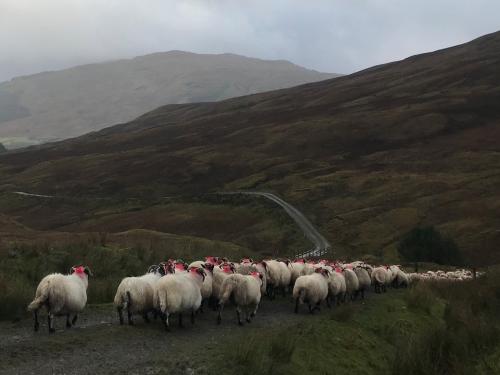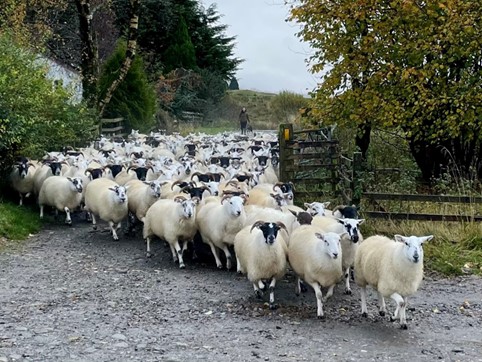This study was a preliminary investigation into the feasibility of developing a data tool to help drive efficiency in the sheep sector. Steps towards this have already been made in cattle with the development of the MyHerdStats tool (available through ScotEID) but, at the moment, there is no similar tool available for sheep.
Several sources of information, potentially useful for evaluating the efficiency of sheep flocks, have been summarised and the feasibility of collecting the different types of data assessed. Sheep farms across Scotland are diverse, therefore the assessments were considered in terms of hill, upland and lowland flock systems.
To have the same level of detail provided by the MyHerdStats tool across the sheep industry, as part of a future MyFlockStats tool, would be extremely difficult. However, based on the data reviewed, overall group information may be sufficient to provide a good overview of how flocks are performing year on year and allow producers to identify where any changes or improvements could be made.

Stage
Directory of Expertise
Purpose
To help deliver the aims of the Vision for Agriculture and Scottish Government’s commitment in the Climate Change Plan, there is a need to improve the environmental and economic efficiency of the livestock sector. Steps towards this have been made in the cattle industry with the development of the MyHerdStats tool, which has been available on the ScotEID platform since January 2023. ScotEID delivers the livestock traceability system for Scotland and is a source of information and assistance for keepers to comply with legislative requirements. The MyHerdStats tool provides users with basic statistics relating to their herds, allowing them to assess performance and make informed management decisions. However, there is not a similar tool available for sheep. This short study investigated the feasibility of a future “MyFlockStats” tool.
Sheep keepers are often collecting information and recording data, whether it be to aid their own flock management decision-making or for the purpose of specific assurance schemes or initiatives (for example, the Quality Meat Scotland (QMS) cattle and sheep assurance scheme). There may be opportunities to incorporate some of this additional information, along with data already recorded through ScotEID, into a future “MyFlockStats” tool. However, at the moment, the availability of any additional information and the logistics of collecting, coordinating, analysing and sharing it is unclear.
The objective of this work was to determine what additional data would be beneficial and practical to incorporate into a “MyFlockStats” decision-making tool to help drive efficiency in the sheep sector.

Results
Information was collated and reviewed through on-line and literature searches and during discussions with a small number of key government, industry and academic stakeholders.
Sheep farms across Scotland are very diverse, implying the need for information on the type of system in which data are collected. Several different types of data and key performance indicators (KPIs) were considered. These generally related to flock structure, ewe and lamb performance and further indicators associated with sales, efficiency calculations, economic information and flock health. Although the initial focus of many of the KPIs were on the economic performance of flocks, several were also important in terms of environmental impact. Overall, a broad range of data types were assessed, with some judged easier to collect or calculate than others. To break down some of these differences and assess the feasibility of collecting each type of data, a scoring system was used based on the level of ease to collect the relevant data required, across hill, upland and lowland flocks.
The scores were:
1 = Available for all without additional data collection.
2 = Available for all.
Requires basic count records / collation of farm information / routine data from 3rd parties (basic data collection, no on-farm technology necessarily required).
3 = Available for those with some technology.
For example, farm software, weigh crate, pregnancy scanning etc.
4 = Available as part of a more extensive performance recording programme.
For example, within an established breeding scheme.
5 = Not available.
Benefits
To have the same level of detail provided by the MyHerdStats tool in the sheep industry would be extremely difficult. However, from the detailed list of data and KPIs reviewed during this study, there are options available for a sheep data efficiency tool in the future. It may be that overall group information is sufficient to provide an overview of how flocks are performing year on year.
Combining relevant information in a MyFlockStats tool would allow key efficiency data and trends to be generated, which would benefit producers by allowing them to benchmark their flock performance across years and identify any areas where changes or improvements could be made. By making informed management decisions based on flock performance information, farmers and crofters across Scotland could improve the efficiency, resilience and productivity of their businesses.
Lead Image: Sheep walking down a lane. Photo credit - Ann McLaren
Project Partners
SRUC